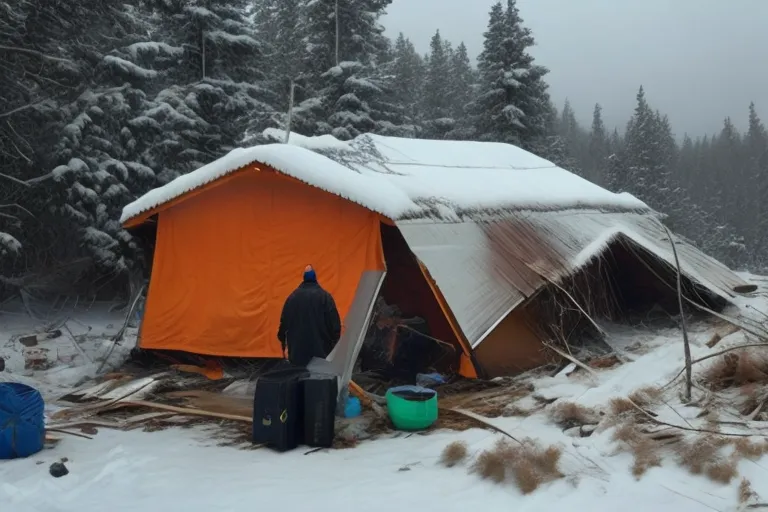Let's delve deep into emergency shelter building—one of the most vital skills you must master to ensure safety in the face of the unpredictable wilderness. Here's a step by step guide in constructing a variety of shelters that will stand against the elements and provide the security you need in any emergency situation.
Understanding the Basics of Emergency Shelter
Before we get our hands dirty, it’s crucial to grasp the core principles of a good shelter. When you find yourself in a survival situation, remember these critical elements:
Insulation: Your shelter should protect you from the cold ground and insulate you from all sides.
Size: Only as large as necessary to accommodate you and conserve body heat.
Materials: Utilize natural materials such as debris, leaves, and branches.
Location: Choose a spot away from hazards and near resources.
For more essential survival tips, visit my in-depth discussion on wilderness survival skills.

The Lean-To: A Quick and Basic Shelter
Let’s begin with something simple, a lean-to shelter. Ideal for mild weather and quick setup:
Find a long, sturdy branch for your ridge pole.
Lean the ridge pole against a tree or balance it between two branches.
Place smaller branches at a 45-degree angle along the length of the ridge pole to form one side of a triangle.
Cover this framework with leafy branches or a lightweight tarp if you have one.
Layer debris such as dry leaves on top for additional insulation.
The A-Frame: Your Classic Woodland Retreat
The A-Frame is an evolution of the lean-to, offering more protection and heat retention:
Secure a long, sturdy branch between two trees to create your ridge pole.
Lean shorter branches along both sides of the ridge pole to create the A-shaped frame.
Thatch the frame with evergreen boughs, starting from the bottom and working your way up.
Finally, cover with additional debris like leaves and pine needles for better insulation.
For further guidance on selecting the best materials, my post on wilderness survival gear may come in handy.
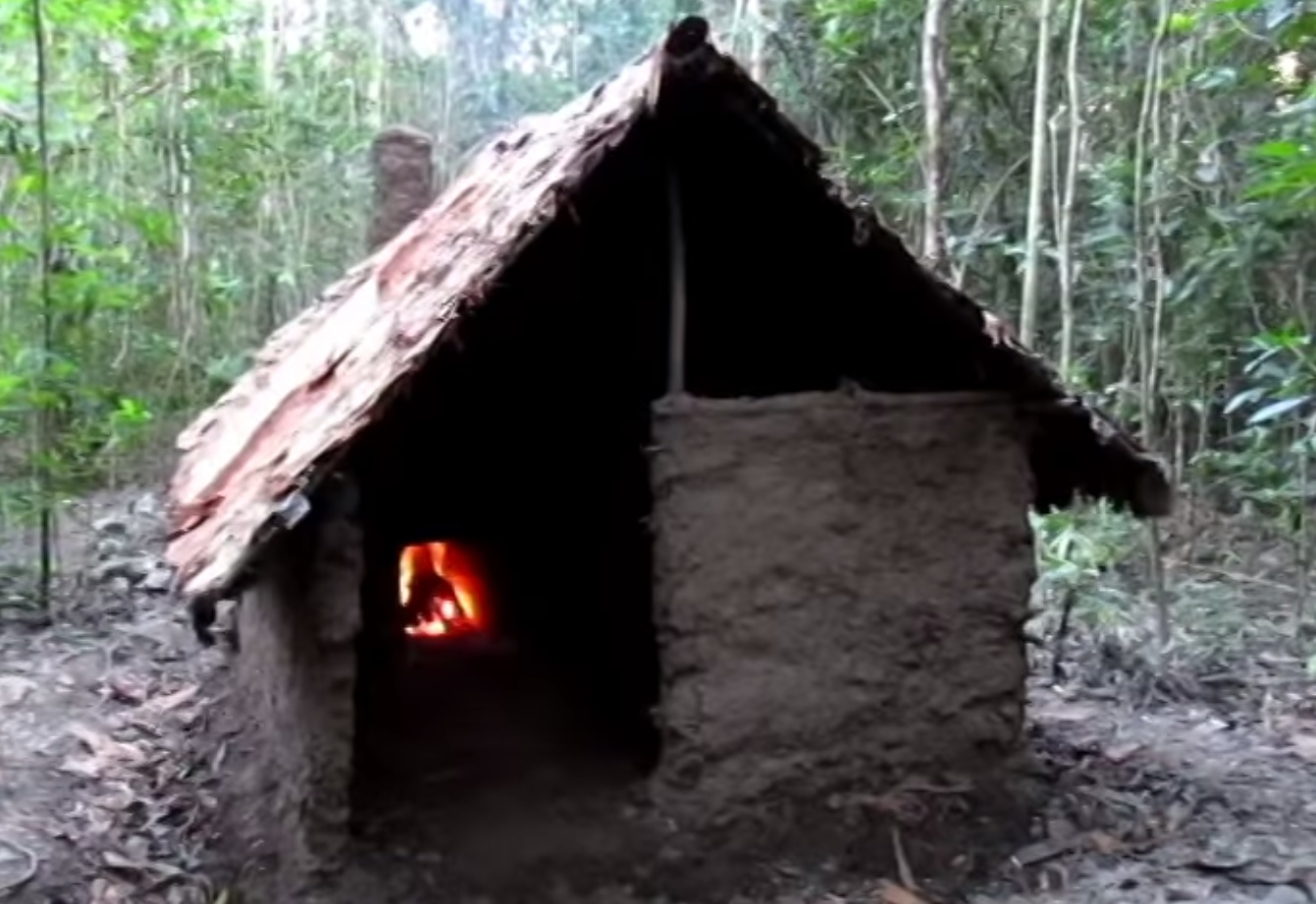
Building a Debris Shelter: Nature's Subzero Haven
A debris shelter is your best bet for trapping body heat in cold weather. Follow these critical steps:
Find a fallen tree or a strong branch that you can prop against another tree to create a spine for your shelter.
Collect sticks, boughs, and limbs to build the ribs of your shelter around this spine.
Heap leaves, pine needles, and other forest duff over the structure. The thicker the pile, the better the insulation.
Inside, create a bedding area with soft materials to further insulate from the cold ground.
Conquering the Cold: Snow Shelters and Igloos
When stranded in snow-covered terrain, snow itself is an excellent insulator:
Snow Cave: Burrow into a drift and hollow out a sleeping area, ensuring the entrance tunnel ascends to the living space to trap warmer air inside.
Igloo: Build blocks of hard-packed snow and arrange them in a spiral pattern. Carve the interior to a dome shape for stability.
To survive the harsh cold, understanding the best fire-starting methods is necessary—knowledge is just as essential as your gear.
Tarp Shelters: The Modern Survivalist's Quick Fix
A tarp can be a versatile and lightweight emergency shelter option. Here's how you can use it:
Simple Tarp Lean-To: String a line between two trees and drape the tarp over, anchoring the sides with rocks or stakes.
A-Frame Tarp Shelter: Use a ridge line and fold the tarp over it, then secure the sides to create an A-frame shape.
Overlooked Details for Shelter Efficiency
Position your shelter to minimize wind exposure and maximize heat from a nearby fire.
Use cordage to reinforce the structure.
An emergency blanket can serve as an additional layer for heat reflection or waterproofing.
Advanced Shelter Building: Techniques for the Skilled Survivalist
Permanent Housing Structures: Combining woodcraft and natural materials to create a more enduring home in the wilderness.
Duct Tape Wonders: Duct tape can repair tears in tarps or join poles and sticks in a pinch.

Shelter as Your Life-Saving Companion
In the face of a natural disaster or an unexpected night under the stars, knowing how to build an emergency shelter is a skill that could very well save your life. From a simple shelter made of branches and leaves to a more complex snow cave for cold weather survival, the shelters we've discussed today are your arsenal against the elements.
Always remember, though, that your knowledge and preparedness are your first line of defense. Check out my ultimate compilation of wilderness first aid strategies to complement your shelter-building skills.
The Subtleties of Site Selection: Where to Build Your Wilderness Haven
Choosing the right location for your emergency housing is as consequential as the building process itself. Here’s what you should consider:
Water Source Proximity: Ensure you’re close enough to a water source for convenience but not so close that you risk flooding.
Natural Shelter: Utilize the protection of natural formations like rock overhangs or dense evergreen trees.
Avoiding Hazards: Steer clear of dead trees, avalanche paths, or animal dens.
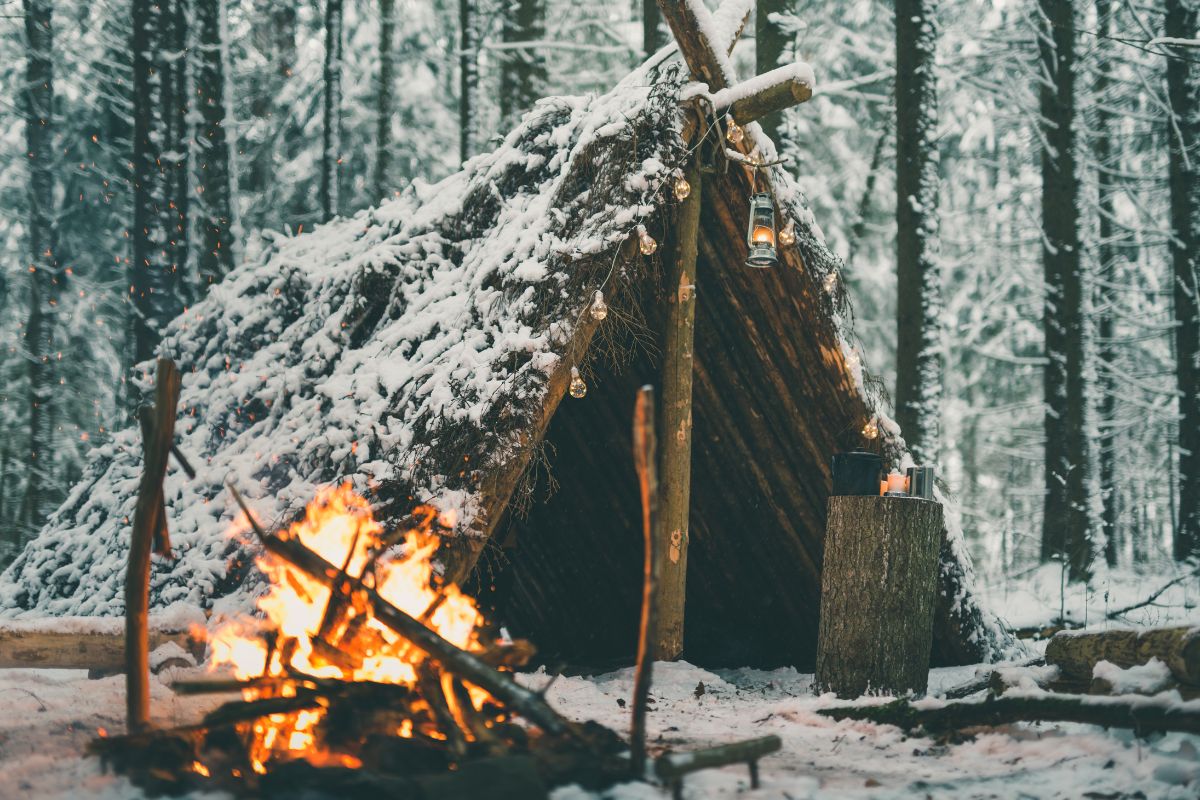
Utilizing Natural Materials for Effective Emergency Housing
Nature provides an abundance of resources that can be fashioned into effective temporary shelters. Here’s how:
Evergreen Boughs: These can be used for roofing to shed rain or snow.
Pine Boughs: Not only do they provide good insulation, but the aromatic scent can be uplifting in a survival situation.
Dry Leaves: Often abundant, they are perfect for insulation and bedding.
The Quintessential Pine Needle Debris Shelter for Insulation
Pine needles are a resource often overlooked by the amateur survivalist. Here’s a step-by-step on integrating them in your shelter:
Collect a significant amount of pine needles—they are lightweight and compress easily for effective insulation.
Use them to create a thick bed inside your shelter to keep you off the cold ground.
Pile them on the outside of your debris shelter to add extra insulation and waterproofing.

The Use of Tarps: Versatile Emergency Coverings
Tarps are indispensable in a myriad of survival scenarios. Whether you're creating a temporary homeless shelter for an emergency situation or just crafting a simple structure to shield from rain, tarps offer quick and reliable protection:
Tarp Snow Shelter: By placing a tarp over a dug-out area in snow, you can create a barrier against moisture.
Tarp Wind Block: In windy conditions, strategically placed tarps can provide a windbreak to reduce heat loss.
Snow Shelter Nuances: Tips for Warmth Retention
Snow shelters are not just about trapping heat but also about managing airflow and avoiding hazards:
Ventilation: Carve a small vent in the roof of your snow shelter to prevent condensation and ensure a supply of fresh air.
Entrance Design: Design the entrance to trap heat inside, for instance, by building the sleeping platform higher than the entrance.
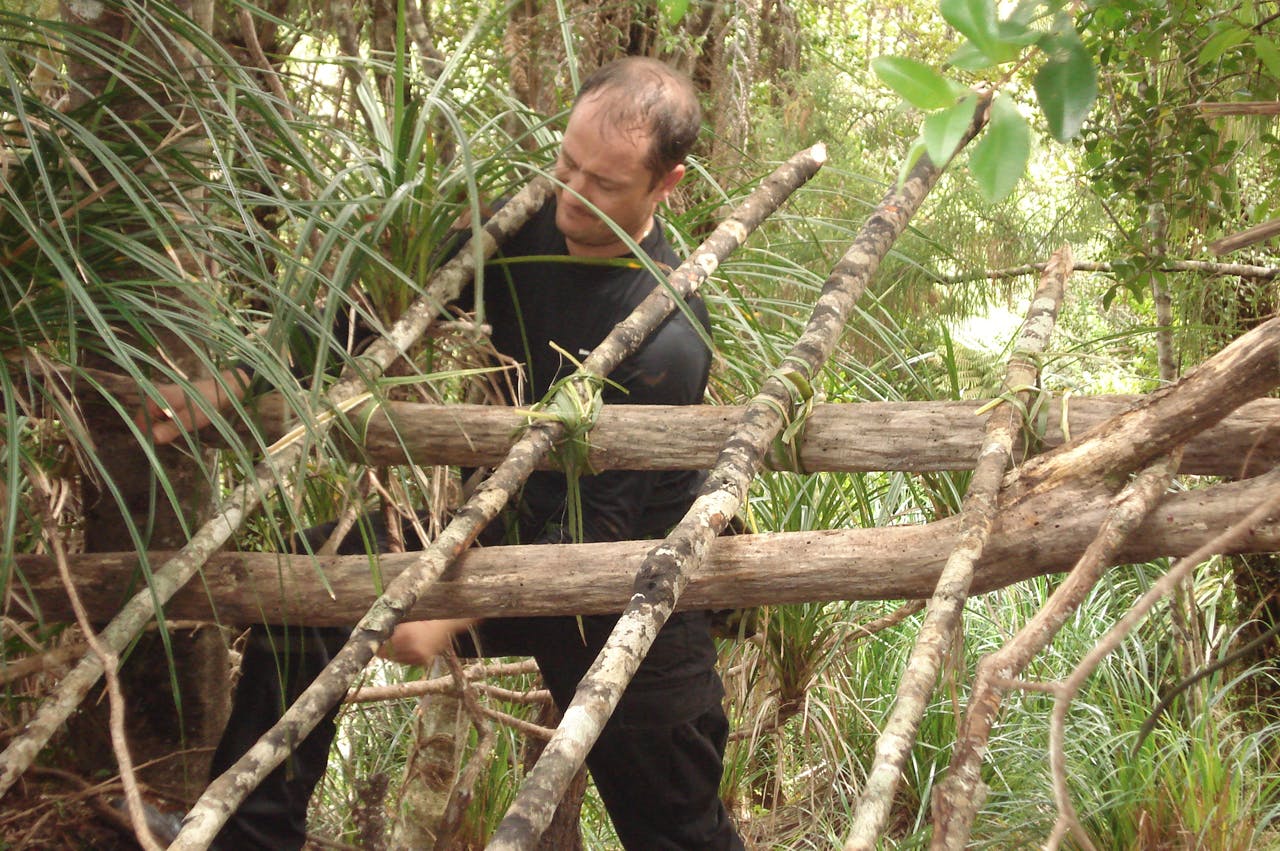
The Debris Shelter: A Versatile Refuge in Any Survival Situation
A debris shelter is arguably one of the most effective types of survival shelter, especially when made correctly:
Structural Soundness: Make sure the frame of the shelter is sturdy and can support the weight of the debris.
Layering: Properly layering materials like leaves and branches can create a waterproof and insulated environment.
Weathering the Storm: Building for Different Climates
Adapting your emergency shelter to the specific climate you are in is crucial for survival:
Cold Weather: Focus on wind protection and insulation to conserve body heat.
Warm Weather: Prioritize ventilation and shade to avoid overheating.
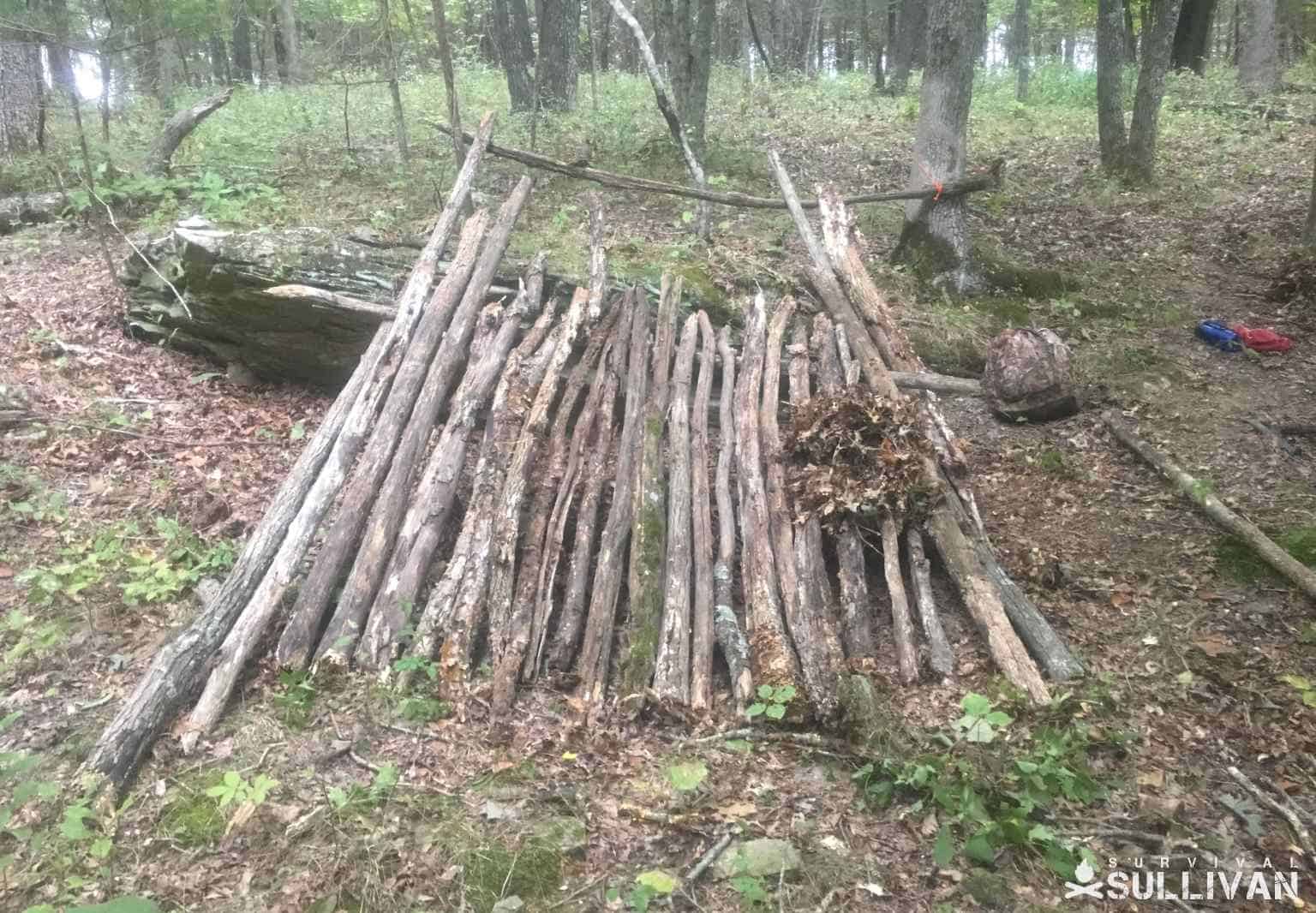
The Psychological Aspects of Shelter
The impact of a well-built shelter on a survivor’s psyche cannot be overstated. Having a safe haven in an emergency situation provides:
A sense of security and peace of mind.
A mental boost by instilling a feeling of accomplishment.
A focal point for survival efforts, which can lead to a more organized approach to overcoming the situation.
Harnessing survival psychology can be the difference between crumbling under pressure and rising to the challenge.
Building a Community: Shelters for Homeless People
Survival skills are not just for the wild; they can be adapted to provide temporary relief for homeless people. Building simple shelters with readily available materials can offer:
A temporary space to seek refuge from urban elements.
An opportunity for communities to engage in helping those in need.
